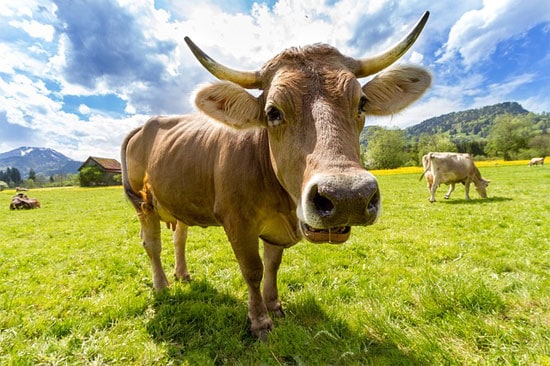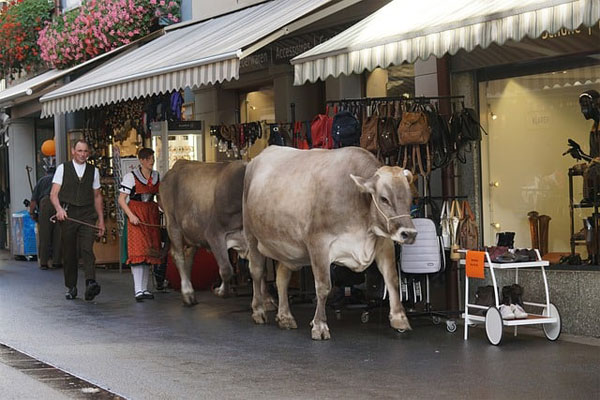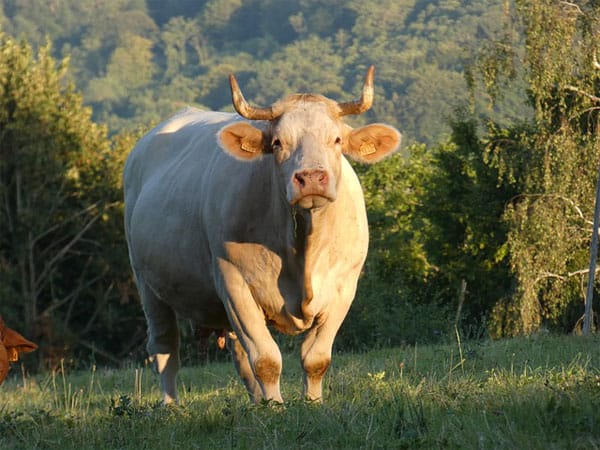There is a big misunderstanding about female cows when it comes to their physiology, especially horns.
Most of the time, we tend to believe that only the male cattle are horned when the truth is far away from that! Well, to answer the question straight away, many types of female cows have horns.
If we dig deeper though, we will find out why we always imagine them without horns, what is the use of those and if all of the female cows have them!
Contents
What is the use of horns?
All animals in their kingdom have their own way of surviving in the wilderness. Cattle are no different in this area.
Female cows from nature, most of them at least, have larger or smaller horns in order to protect their calves and themselves from dangerous predators.
This is why horns are not only a male privilege. As you can imagine, a hit from a horned animal is a very powerful attack that can even cause fatal injuries.
Why do we see female cows without horns?

Farmers choose to own female cows which do not have horns from birth, or, if they do, they always remove them. There are many reasons to explain why farmers decide to operate like that.
First of all, female cows with horns can be dangerous for humans and for the other animals in the herd. On the one hand, there is the antagonism between the cows (that is the same in every group of animals) which can make them aggressive. They may cause injuries to the farmer as well if they decide to attack.
Moreover, they might cause damage to the farm they live in. One cannot predict how an animal with horns will respond, while they are also not so easy to transport if needed. Finally, since they might attack other cattle, they might destroy the quality of hides and carcasses.
How are the horns removed?
The common image of a cow is a black and white cattle, with a pink nose, without horns, and ready to be milked. Most of the time, the horns part is the result of a procedure called ‘dehorning’ or another one called ‘disbudding’.
Dehorning is removing the horns when the calves are no more than 12 months old. The younger they are, the less pain they will feel. It is an operation that includes cutting the horn at the spot where it meets the skin. They cauterize it afterward to prevent bleeding.
Disbudding is a different story. It must be performed on a very young calf at the maximum age of two months. They burn the horn buds and the cells around them which results in them not growing at all. Farmers usually use chemicals of hot iron.
Both procedures usually include anesthetics so that the animal will not be tormented. Clean facilities and regular use of disinfectants are required to not put the cow’s life in danger.
Also Read: Best Cow Milking Machine Reviews
Do all female cows have horns?

As we mentioned before, not all of them have horns. It depends on genetics, but it is a controllable situation for a farmer. If they breed a cow or a bull that comes from a no-horn type with a horned cow or a bull, the calf possibly will be hornless. Regardless of gender, the polled (hornless) gene determines if a cow, male or female, will be born with horns.
The majority of cattle breeds are born with horns. Dairy and beef cows are included in this list. Some of these types are Holsteins, Jerseys, Highlands, Brahma, White Park, Danish Reds, Kerry dairy cattle, and the famous Texas Longhorns!
There are some breeds that are born with the polled gene. A farmer also may choose to change the genetics when a horned and a hornless cow make a calf! Some of the breeds which are hornless from nature are Hereford, Red Angus, and Shorthorn cattle.
The Big Dilemma
There is a big ethical question regarding dehorning and disbudding. Is it really mandatory to remove the horns from female cows? The answer is “yes”, to protect the cattle and themselves. On the other hand, the animal suffers a painful procedure for this to happen.
And if this is the case, why don’t farmers own only cows with the hornless gene? The issue here is financial. Cows born without horns are more expensive than the horned breed and it is, let’s face it, reasonable for the farmers to choose a horned type.
In some countries dehorning is forbidden and it’s up to the owners to find a solution for the potential injuries. Such countries are all the European Union ones and some others. They propose alternative ways to protect the herd. For example, they suggest that feeding spaces and cubicles could be of larger size. The yard should be easier to access through wide passages and generally, they emphasize space alternatives.
Moreover, there is the suggestion to breed only polled cows. This reduces the aggressiveness in the cattle herd. They have already developed breeding programs that will provide assistance to the farmers on that matter.
Conclusion
Regarding the outcome of this article, most female cows have horns, contrary to what people believe. It is a gift from nature in order to protect themselves and their little ones. What we usually see is the result of removing them, or, some breeds that are born hornless. The dilemma is whether should we submit animals to a painful procedure and which are the advantages and disadvantages of this situation!
Related Posts:







